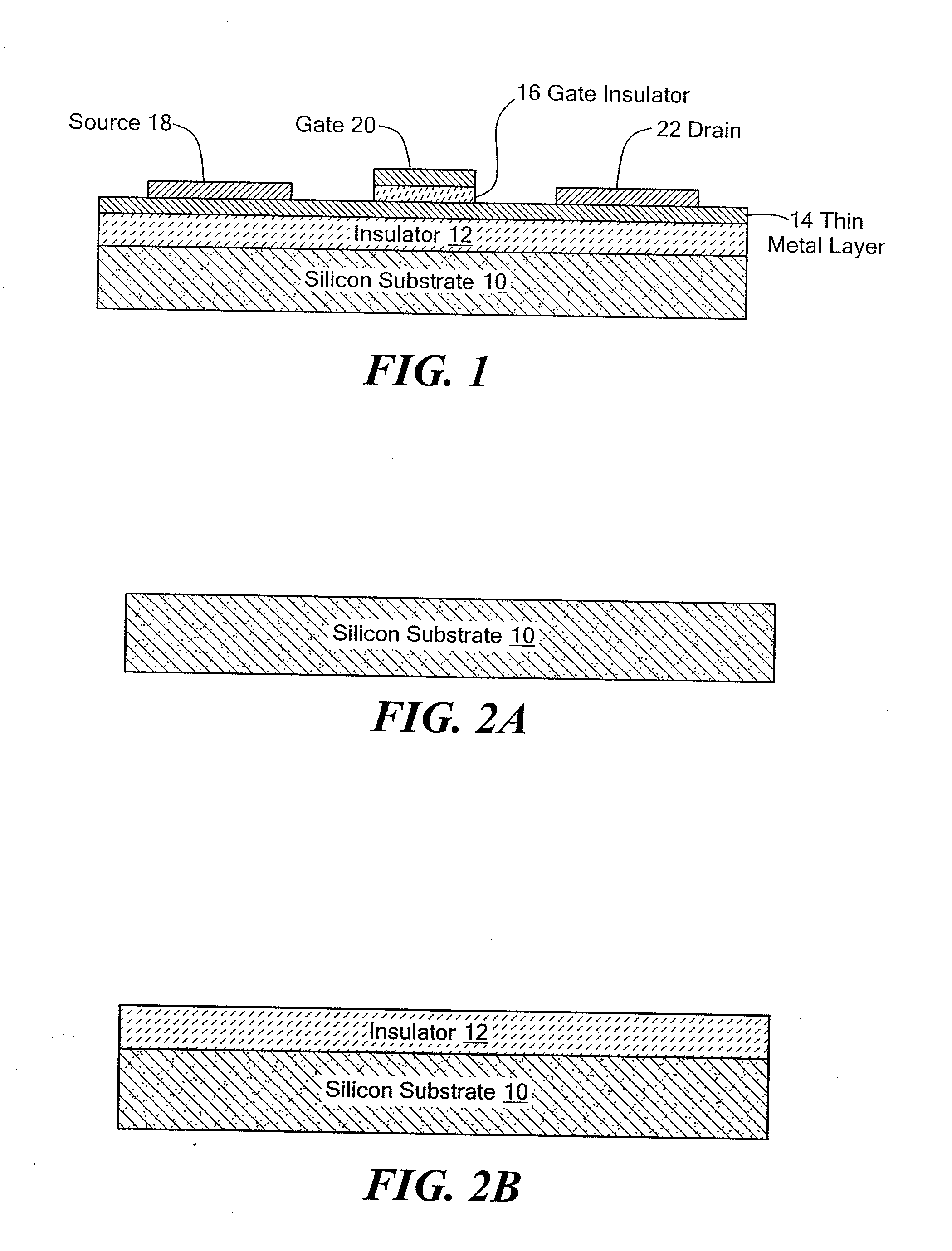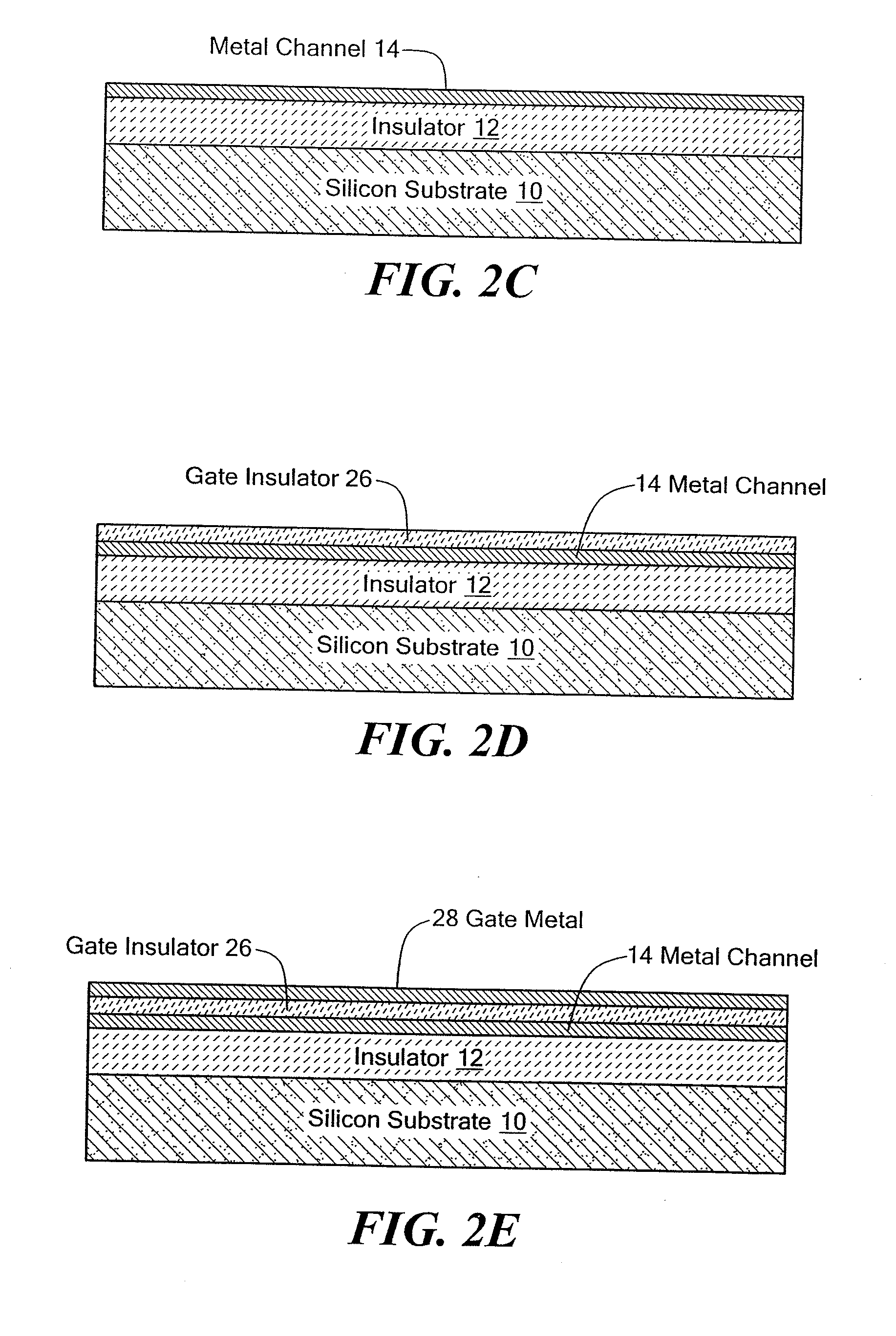Metal transistor device
a transistor and metal technology, applied in the field of transistors, can solve the problems of degrading the on-off current ratio and increasing the power dissipation of integrated circuits, and achieve the effects of improving transistor performance, improving transistor and integrated circuit performance, and reducing feature siz
- Summary
- Abstract
- Description
- Claims
- Application Information
AI Technical Summary
Benefits of technology
Problems solved by technology
Method used
Image
Examples
Embodiment Construction
l view of a complementary version of the present invention. Either p-channel MOSFETs or p-channel metal transistors, as shown, can be integrated with n-channel metal transistors for complementary circuit designs.
[0015]FIG. 5 is a graphical illustration of examples of depletion width as a function of carrier concentration in the channel shown for difference values of relative dielectric constant K and effective voltage V.
[0016]FIG. 6 is a cross-sectional view of an enhancement-mode embodiment of this invention.
[0017]FIGS. 7A-7E is a series of cross-sectional views illustrating a process sequence for an enhancement-mode embodiment of this invention.
[0018]FIG. 8 is a process sequence for fabricating an integrated circuit device in accordance with the invention.
DETAILED DESCRIPTION OF THE INVENTION
[0019]An invention is described herein to improve transconductance and reduce short channel effects over that of silicon transistors. A preferred embodiment of the invention uses a high conduc...
PUM
| Property | Measurement | Unit |
|---|---|---|
| thickness | aaaaa | aaaaa |
| width | aaaaa | aaaaa |
| width | aaaaa | aaaaa |
Abstract
Description
Claims
Application Information
 Login to View More
Login to View More - R&D
- Intellectual Property
- Life Sciences
- Materials
- Tech Scout
- Unparalleled Data Quality
- Higher Quality Content
- 60% Fewer Hallucinations
Browse by: Latest US Patents, China's latest patents, Technical Efficacy Thesaurus, Application Domain, Technology Topic, Popular Technical Reports.
© 2025 PatSnap. All rights reserved.Legal|Privacy policy|Modern Slavery Act Transparency Statement|Sitemap|About US| Contact US: help@patsnap.com



